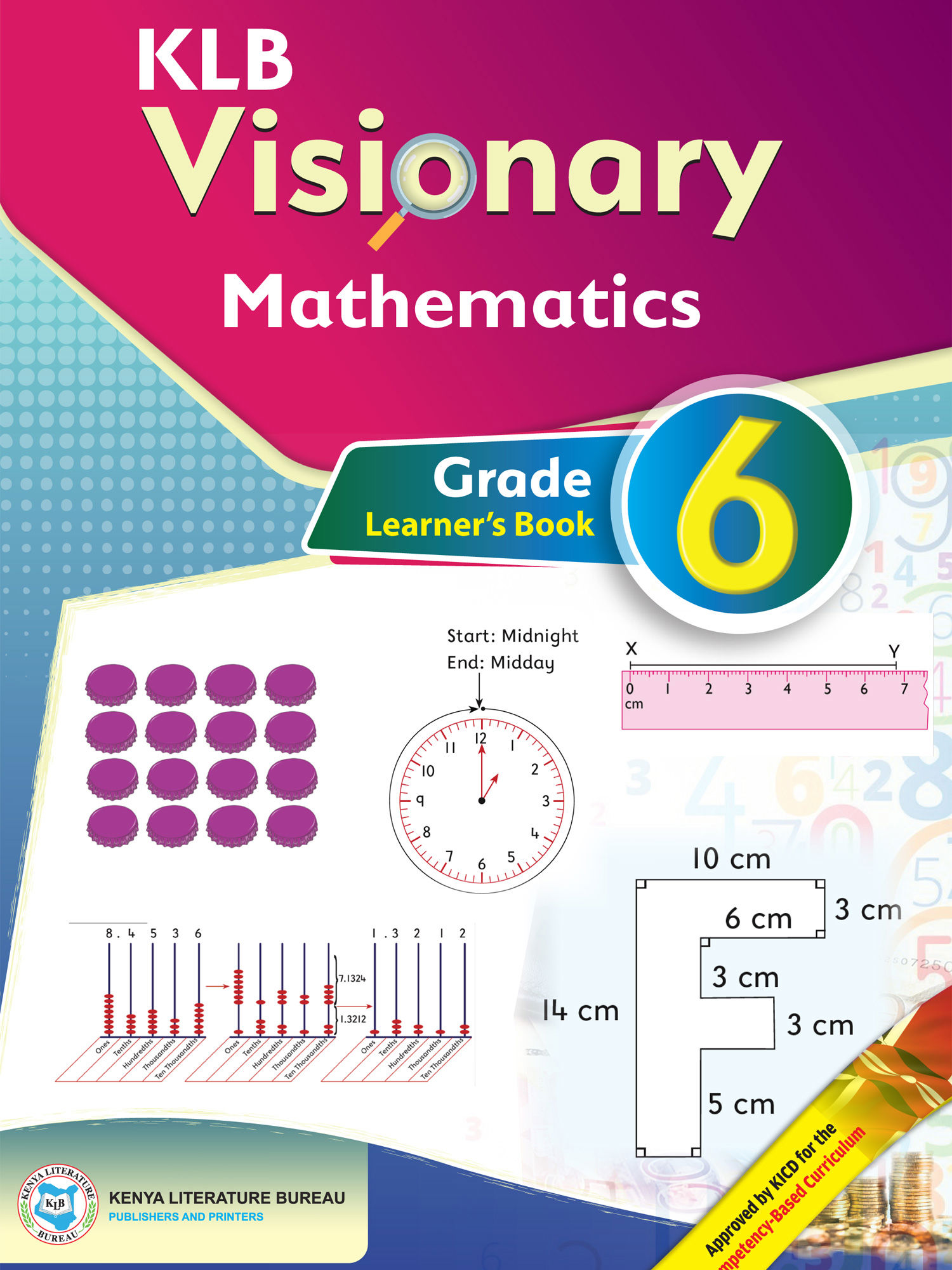
Authors
Samuel Irumbi, Francis Mwangi, Obadiah Kariuki, Zipporah Muli, Washington MbiruruExercises kit’s authors
Samuel Irumbi, Francis Mwangi, Obadiah Kariuki, Zipporah Muli, Washington MbiruruPublisher
Kenya Literature Bureau
Included in packages

-
The study kit contains 149 chapters and 1054 exercises of which 664 are in the chapters and 390 in the task exercises.
-
Authors
Samuel Irumbi, Francis Mwangi, Obadiah Kariuki, Zipporah Muli, Washington Mbiruru -
Exercises kit’s authors
Samuel Irumbi, Francis Mwangi, Obadiah Kariuki, Zipporah Muli, Washington Mbiruru -
Subject
Mathematics -
Grade
Grade 6 -
Kit's language
English -
Publisher
Kenya Literature Bureau -
Included in packages
1. Numbers - Whole Numbers
2. Numbers - Multiplication
3. Numbers - Division
4. Numbers - Fractions
5. Numbers - Decimals
6. Measurement - Length
7. Measurement - Area
8. Measurement - Capacity
9. Measurement - Mass
10. Measurement - Time
Lead |
Chapter |
|---|---|
| 10.1. | Identifying Time in a.m. and p.m. |
| 10.2. | Writing Time in a.m. |
| 10.3. | Writing Time in p.m. |
| 10.4. | Writing Time in a.m. and p.m. |
| 10.5. | Relating Time in 12 Hour to 24 Hour Clock Systems |
| 10.6. | Relating Time in p.m. to Time in 24 Hour System |
| 10.7. | Conversion of Time (1) |
| 10.8. | Conversion of Time (2) |
| 10.9. | Travel Time Tables |
| 10.10. | Time Duration |
11. Measurement - Money
Lead |
Chapter |
|---|---|
| 11.1. | A Price List |
| 11.2. | Factors to Consider When Preparing a Simple Budget |
| 11.3. | Preparing a Simple Budget |
| 11.4. | Identifying Profit and Loss |
| 11.5. | Profit |
| 11.6. | Loss |
| 11.7. | Types of Taxes |
12. Geometry - Lines
13. Geometry - Angles
Lead |
Chapter |
|---|---|
| 13.1. | Angles on a Straight Line |
| 13.2. | Measuring Angles on a Straight Line in Degrees |
| 13.3. | Using Angles on a Straight Line |
| 13.4. | Sum of Angles in a Triangle |
| 13.5. |
Angles of a Triangle
|
| 13.6. | Using Angle Sum of a Triangle |
14. Geometry - 3-D Objects
Lead |
Chapter |
|---|---|
| 14.1. | Identifying 3-D Objects in the Environment |
| 14.2. | Cuboids and Cubes |
| 14.3. | Cylinders |
| 14.4. | Triangular Based Pyramid |
| 14.5. | Square Based Pyramid |
| 14.6. | Rectangular Based Pyramids |
